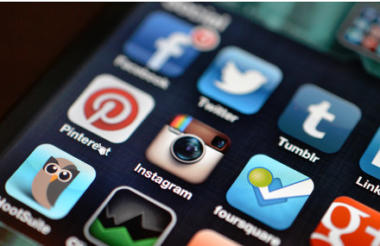As social media managers we’re often in the game of trying to predict human behaviour – tricky during business-as-usual, let alone during an unprecedented pandemic.
My team at international charity Sightsavers manages a global social media community of over 100,000 followers from the organisation’s HQ in the UK. When the country went into lockdown, we quickly had to adapt to a new way of working and communicating with our audience.
Here are the top five things we’ve learned.
1. Listen to your audience
Every morning, the team trawls the social media feeds, joining conversations, highlighting trends and amplifying other people’s posts. This social listening has been vital during lockdown, providing a daily temperature check to our colleagues from "the outside world".
Through comment, hashtag and keyword monitoring we’ve fed in questions to supporter FAQs, advised communication colleagues on what messages might resonate and adapted posts in our calendar to nod empathetically to the "new normal" our followers found themselves in.
The Sightsavers team uses Sprout Social to conduct social listening, but if you don’t have much budget, opening a few tabs on Twitter with Covid-related hashtags or just monitoring trends in your post comments will work too.
2. Find where your organisational voice could fit
With some of our activity paused, and other parts being looked at to see what could be adapted, we adopted a more reactive approach to social media, looking for existing conversations that we could contribute to instead.
We drew on our expertise around WASH (water, sanitation and hygiene) to promote good handwashing practice. We created an inclusive handwashing demo. We joined the #Covid19Disability conversation and shared tips on talking about the pandemic and designing healthcare responses in a way that doesn’t leave people behind.
Meanwhile, as daily social media trends emerged, we engaged with the ones we could contribute to in a meaningful way. Our #EYEsolationChallenge was a low-resource engagement win, our #EqualWorld tour meant our followers could travel virtually with us, and our sight-related emoji quiz at least kept our colleagues entertained.
If you’re wondering where your voice fits in on social right now, take a look at your organisational values and see if there’s a gap in the conversation that you can meaningfully fill. Use channel insights or social listening trends if you need a creative jumpstart.
3. Be analytical of your analytics
I’m always a little critical of our channel analytics. Metrics like follower growth, engagements and impressions are important, but they might not accurately reflect your communication aims during the Covid-19 pandemic.
A key objective for us was to disseminate accurate and accessible health information to our followers. So, while measuring comments, retweets and shares works for engagement-focused content like quizzes, informational content might need to be measured through video views or link clicks.
My team measures overall channel growth and engagement metrics alongside individual post performance, so we can get a better picture of whether our content is meeting its objectives. This can save money and time too. We paused a paid channel growth campaign when it suddenly stopped converting, and regularly re-use and improve our best performing tweets to free up time to be more effective in other areas.
If you don’t use a social media management tool, an easy way to do this is to note the objective next to the post in your content calendar, then use channel insights to track its success once shared.
4. Prepare for increased moderation
Never has the social media manager’s job been busier than when more time at home means people are spending more time online. Luckily, we serve a broadly positive and supportive social media community. But we also answer trickier queries and manage complaints online.
To help us manage social media comments effectively, we created a set of rules around what we will or won’t respond to. These are clearly outlined in our community guidelines which are linked to on our channels. We also use a checklist to remind us to remain "human" when we’re answering followers’ questions, as we strive to deliver honest, friendly and empathetic replies.
If you’re struggling to decide what to respond or not respond to during lockdown, it might help to have a process or a response template that’s signed off by someone more senior. That way, you’ll be able to deliver timelier and more effective supporter care without needing to seek guidance for each and every reply.
5. Give yourself space to breathe
It’s been an incredibly busy time for many social media managers who’ve suddenly found their channels being relied on more heavily than usual to get messages out into the world.
While working out-of-hours is unavoidable at times, our team takes TOIL and schedules in regular moderation breaks, clearly signposting our working hours and an alternative means of contact in our auto-replies or channel bios.
I’d also recommend using your channel analytics to interrogate whether it’s really necessary to work that extra hour creating an asset that will only be used once, or logging on at the weekend to post if your audience only engages with you during the week.
As digital experts, working from home might also be an opportunity for you. As a team, we’ve revisited and adjusted our objectives during lockdown to reflect what’s possible to deliver virtually and identify where our skills might be useful to the wider organisation.
However you need to manage your channels during lockdown, I’ve always found that taking time away from the screen when you can is useful for unlocking creative ideas later and also just simply for taking some much needed downtime.











